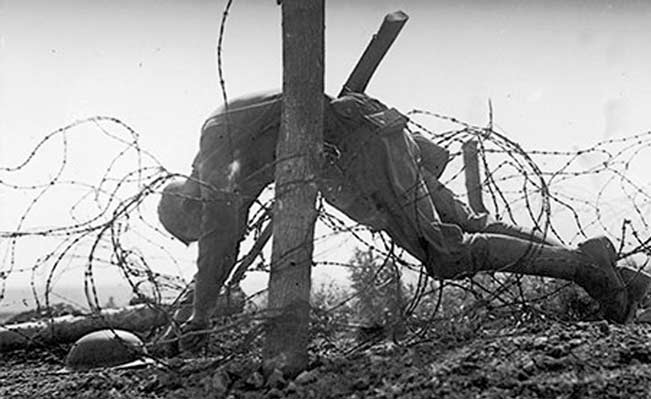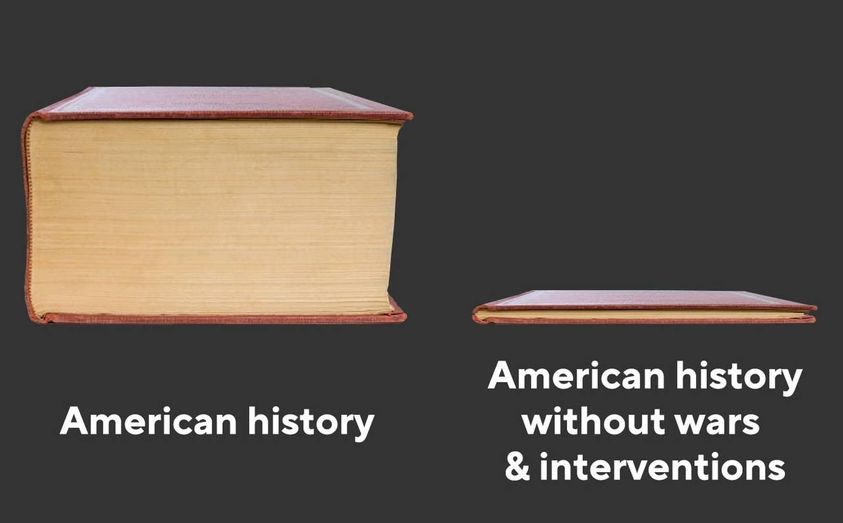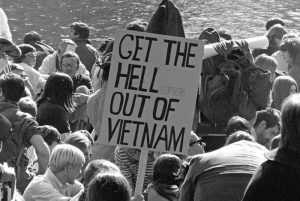
Views: 108
There are many definitions and/or understandings of war. However, from the very academic point of view, war can be understood as an armed conflict between at least two sides usually but not necessarily states fought usually for some (geo)political goals. The focal conceptual idea of war is the use of force between large-scale political subjects like states, empires, or coalitions. Historically, wars have been fought mainly for the control of certain land for different reasons ranging from a purely political one to a purely economic one or a combination of several of them.
Many types of war and warfare can be seen from the numerous adjectives that can be given before the word “war” like civil war, guerrilla war, total war, limited war, gang war, tribal war, regional war, local war, world war, religious war, race war, cold war, trade war, independence war, propaganda war, cyber war, class war, etc. Some of these names, however, are, in fact, metaphors that are exploiting the image of violent conflict over some political or other goal taken from IR, and transferred to some actors who are not the states.
Nevertheless, from a very legal viewpoint, states can be at war without, in fact, using force against each other (for instance, Montenegro’s declaration of war to Japan in 1904) or vice versa, states can use force against each other on quite a large scale but formally not to be in declared warfare against each other (for instance, the German invasion of Poland in 1939). Nonetheless, the identification of warfare with some political background concerning the reasons and goals, in theory, means that it can be applied to the system of international relations (IR) and domestic civil wars. On both levels – interstate and domestic – wars are in practice very often caused by some disputes over sovereignty and land.
The beginning of the modern form of warfare as presumably, an organized and more or less clear goal-directed violent activity comes from the development of the European state system in the early modern time, i.e. from around 1500 onward. Any war has either formal or quasi-legal character from the point of international law. The declaration of a state of war does not mean necessarily to be followed by an outbreak of hostilities (for instance, Austria-Hungary started hostilities against Serbia in 1914 one month after the war declaration). After the Cold War, it is more and more used the term “new” wars which are characterized as being linked to intra-state ethnic conflict (for instance, the destruction of ex-Yugoslavia in the 1990s), the usage of advanced military technology, or the involvement of non-state actors of different nature like terrorist groups or guerrilla movements. Hegemonic and guerrilla wars are on diametrically opposite ends of the scale of different wars. The first one is a war for the creation of dominance of huge portions of the world or the entire world order by deeply restructuring the global balance of power. The guerrilla war (in Spanish “little” war) is, in fact, an insurgency or “people’s” war which is fought by irregular troops which are using tactics that are suited to the terrain and emphasize mobility and surprise rather than superior firepower.
It can be said that each war is to a certain extent unique and unrepeatable as each of them are the product of a specific set of historical circumstances followed by particular social, economic, and political backgrounds. Nevertheless, there is a historical very fact that war as a phenomenon appears constantly and, therefore, many theoreticians argue that it should exist deeper explanations of war from the point of view that certainly there are some common elements in all of them that apply to all historical times and political-economic societies.
In the theory of IR, there are many approaches to the reasons for military conflicts, but certainly, there is no single or unified view about the causes of war and warfare.
According to the majority of theoreticians, war is nothing else but only a large-scale expression of the selfish, violent, and power-seeking nature of humans. In other words, war is a product of instincts and appetites that are natural elements of human individuals. Consequently, war is endless for the reason that human desires and appetites are infinite, while the resources to satisfy them are always finite. As a result, the struggle and competition that gives rise to the will inevitably express itself in violence, bloodshed, and war crimes. Some zoologists claim that social aggression is simply biologically programmed and especially in mails resulting from territorial and sexual instincts that are found in all species including humans. Technically, war can be fought in order to protect the (home)land, acquire wealth and resources, achieve national glory, advance religious, ideological, or political principles, or establish racial or ethnonational hegemony, etc. For instance, one of the causes of war can be autarky (“self-rule”) – the principle of economic self-sufficiency which can result either in colonial expansion or a withdrawal from international trade. Nevertheless, in all of these cases, war provides a necessary and inevitable framework for aggressive behavior that is hard-wired in human nature.
Others, like neo-realists, are claiming that the regular happening of war in history is a result of the anarchic structure of the system of IR. For them, war is an enduring feature of IR and world affairs. The possibility of war stems from the inescapable dynamics of power politics. As states pursue their own national interest they will inevitably come into conflict with one another. Nevertheless, neo-realists claim that violent power politics is something real and natural. Moreover, the state’s egoism and rivalry between and among political actors are inherent tendencies within human nature toward self-seeking, competition, and aggression. From a neo-realistic point of view, the international system is, in fact, anarchic, and, therefore, (nation)states are simply forced to rely on self-help for the sake to achieve national survival and security. The common viewpoint by the neo-realists is that the states can be stable and secured only by the acquisition of military power which means a strong likelihood of war. The crucial factor distinguishing between war and peace is the balance of power. In principle, states will avoid war if they calculate that their chances of victory are slim. Furthermore, decisions about peace and war are made through the more profound analysis of a cost-benefit in which national self-interest may dictate either the use of war or its avoidance. Nevertheless, neo-realists claim that states that wish to preserve peace must, therefore, be prepared for warfare as in this way they hope to deter potential aggressors and prevent any other state or coalition of states from achieving a position of regional predominance or global hegemony (for instance, the British traditional policy toward continental Europe).
The third group argues that war is resulting from the political construction of states and the ideologies which they are expressing in the international arena. For instance, the liberals thought that in the 19th century, aristocratic states have been aggressive contrary to those states with the republican (democratic) political system due to the martial inclinations of their ruling class. For the neo-liberals, peace is natural, but by no means an inevitable, condition for IR. War arises from three sets of circumstances and each of which is avoidable:
-
- State egoism in the context of anarchy may lead to conflict and a possibility of war. The anarchy in IR can and should be replaced by an international rule of law, achieved through the construction of supranational bodies (for instance, the OUN).
- War is often linked to economic nationalism and autarky – the quest for economic self-sufficiency (as a result, it is expected to conflict with one another). Peace can be in this case achieved through free trade and other forms of economic interdependence which may make war very economically costly that it becomes unthinkable.
- The deposition of a state towards war or peace is crucially determined by its constitutional character. Nondemocratic authoritarian states tend to be militaristic and expansionist, accustomed to the use of force in order to achieve both domestic and foreign goals. Contrary, as they claim, democratic states are more peaceful, at least in their relations with other democratic states. However, the neo-liberals forget the historical link between inner political democracy and external military imperialism (for instance, the case of the UK which was around 1900 the greatest imperialistic state in the world and probably history).
In the 1930s, it was almost a common opinion that Nazi-fascist states of extremely authoritarian political regimes have been aggressive. The Marxist political philosophy is explaining war primarily in economic terms and argues that states with capitalistic social-economic order are driven to aggression (imperialism) for the real reason of their uncompromised economic competition for control over the markets, while, contrary, socialist states have been relating to each other peacefully. For Marxists, WWI was an imperialistic war fought in pursuit of colonial gains in Africa and elsewhere. The origins of modern warfare can be traced back to the capitalistic economic system. War is the pursuit of economic advantage by other means. By Marxists, socialist movements are presented as anti-war or even of pacifist orientation being shaped by a commitment to internationalism that means cooperation and peace but not confrontation and war. The world’s most powerful capitalistic states use war, directly or indirectly, for the sake to defend or expand their global economies and political interests. Therefore, war is closely associated in modern (capitalistic) times with imperialism and hegemony. As a suggestion, long-time peace can be built only by a radical redistribution of global power. The Marxist conclusion during the Cold War was that global socialism was bringing global peace, prosperity, and cooperation between different nations, groups, states, etc. Furthermore, for them, justice in domestic social relations was bringing peace in the international arena. Finally, for the Marxists, economic class exploitation followed by imperialistic cross-sea colonialism was bringing global conflicts and wars.
However, liberals believe that the constitutional and governmental political structure of the states inclines some of them toward aggression while others toward peaceful cohabitation. They shared an idea that the states with democratic political arrangements do not go to war against one another, as is implied by the so-called Democratic Peace Thesis. By contrast, the liberals argue that authoritarian states are inclined towards militarism and warfare for the reason that such political regimes are heavily dependent on the armed forces to keep inner political and social order in the absence of the democratic process of elected representatives of the people and through the need to subdue subordinate national and ethnic groups. For instance, communist states are aggressive for the reason of their undemocratic totalitarian political and economic organization followed by their universalist ideology. Contrary, liberal democracies exist peacefully as a result of their economic interdependence with each other, and the constraints of democracy on the use of force by the state’s authorities. From the empirical standpoint, the liberals so far have the better of this argument as there are few cases of democracies that have been going to war with each other. However, historically, the greatest and most violent imperialists and exploiters of colonies were exactly the liberal democracies which as well as produced numerous examples of war crimes, exterminations of ethnic groups, or direct support of dictatorial regimes abroad. Nevertheless, the phenomenon of militarism, either in quasi-democratic (the USA) or authoritarian (North Korea) political systems, is usually leading to a glorification of armed forces, belief in heroism and self-sacrifice, and the recognition of war as not only a legitimate instrument of foreign policy to protect national interest but as well as an expression of national patriotism.
The branch of political science theoreticians – social constructivists, place special emphasis on cultural and ideological factors which are most influential on the process of making war. A view on war, politics, and peace by the feminist movement is very unique and new. Feminists adopted, actually, a gender perspective on war, politics, and peace as they claim that wars historically, in fact, are fought between males. However, they forgot to take into consideration several important cases of female warmongering like the former US Secretaries of State Madeline Albright and Hillary Clinton, mystical Amazon female warriors, or the British PM Margaret Thatcher. Nevertheless, the feminists claim that the origins of the war are the warlike nature of males and the institution of patriarchy they created. Contrarily, there are allegedly close associations between women and peace based on the natural peacefulness of women and on the “fact” that women’s experience of the world encourages stress on human connectedness and cooperation. In other words, the image of international politics as conflict-ridden and prone to violence reflects masculinist assumptions about self-interest, competition, and the quest for domination.
Critical theorists like Noam Chomsky have been showing a particular interest in the concept and features of hegemonic war. They argue that the global Great Powers use war either directly or indirectly for two practical reasons: 1) to defend, or 2) to expand their worldwide political or/and economic interests. Consequently, according to them, great wars are associated with the state’s hegemony projects, while global peace is going to be built up only by the restructuring of IR and the international system of Great Powers. A UK academic and IR theorist Mary Kaldor in her book New Wars and Old Wars (2006) claims that there is a direct link between new types of war after 1990 to the crisis in state authority due to the impact of privatization and globalization. There are violent fights for the sake to obtain either access to or control of the state, state authorities, and institutions which are leading to huge violations of human rights in many cases carried out in the name of identity and mainly have been pointed against civilians and their rights. Another feature of the post-Cold War armed conflicts across the world is asymmetrical warfare which is a war fought between two opposite sides but with clearly unequal levels of military, economic, and technological power and potential. In principle, but not necessary, in such kinds of wars, warfare strategies tend to be adapted to the needs of the weak. Many contemporary wars are caused by insurgency – an armed uprising which is involving irregular soldiers with the final political goal to overthrow the established and usually legitimate regime. Furthermore, contemporary so-cold “new” wars have several common features:
1) They tend to be civil wars rather than wars between the states.
2) The issue of identity is generally very prominent and it can be even the chief cause of the conflict.
3) “New” wars are asymmetrical as they are often fought between unequal sides.
4) The distinction between military and civilians is disappearing.
5) “New” wars in many cases are more barbaric compared to “old” wars as clearly was shown in the 1990s with the case of the violent destruction of ex-Yugoslavia especially in Bosnia-Herzegovina and South Serbian Autonomous Province of Kosovo-Metochia where in 1996−1999 the Albanian Kosovo Liberation Army sponsored by the US Clinton-Albright Administration took up an armed uprising against Serbia’s authorities and institutions for the sake to separate the province from the rest of Serbia and proclaim independence that happened in February 2008.
Ex-University Professor
Research Fellow at Centre for Geostrategic Studies
Belgrade, Serbia
www.geostrategy.rs
sotirovic1967@gmail.com
© Vladislav B. Sotirovic 2023
Personal disclaimer: The author writes for this publication in a private capacity which is unrepresentative of anyone or any organization except for his own personal views. Nothing written by the author should ever be conflated with the editorial views or official positions of any other media outlet or institution.
Origins of images: Facebook, Twitter, Wikimedia, Wikipedia, Flickr, Google, Imageinjection, Public Domain & Pinterest.
Read our Disclaimer/Legal Statement!
Donate to Support Us
We would like to ask you to consider a small donation to help our team keep working. We accept no advertising and rely only on you, our readers, to keep us digging the truth on history, global politics, and international relations.
FOLLOW US ON OUR SOCIAL PLATFORMS










